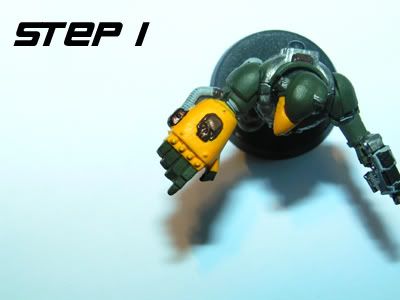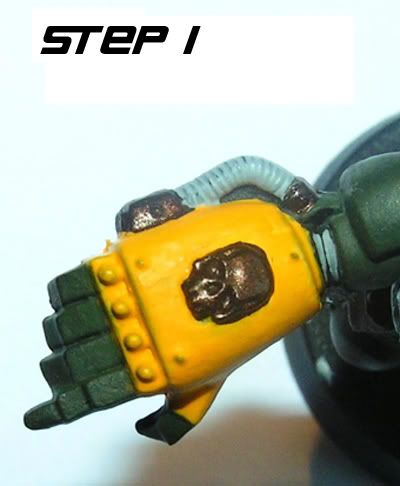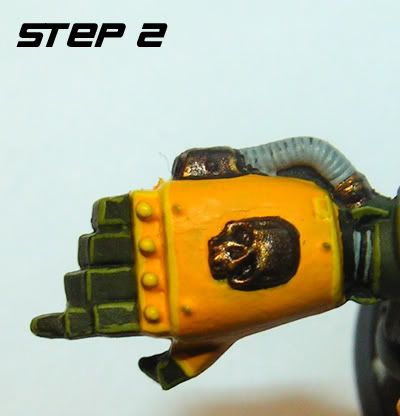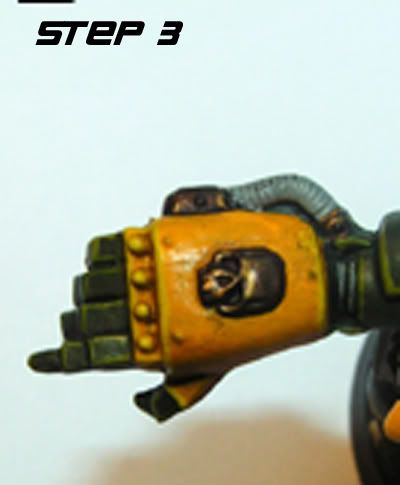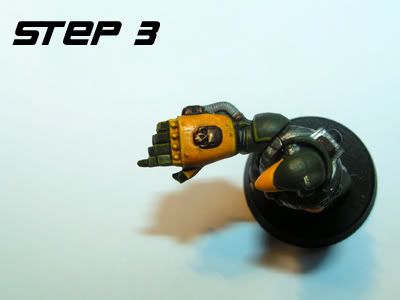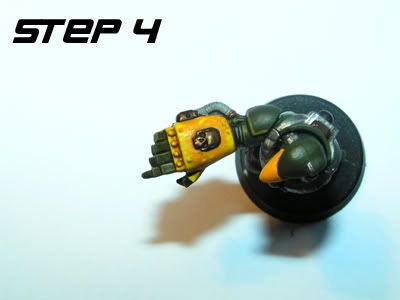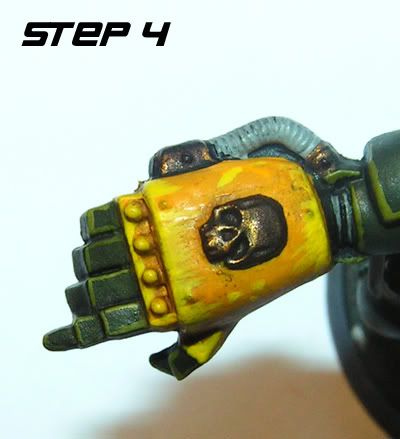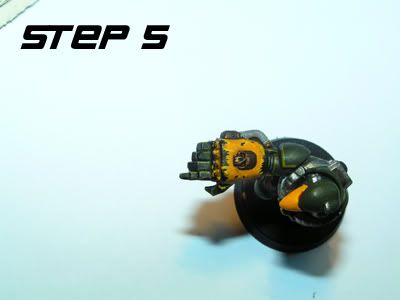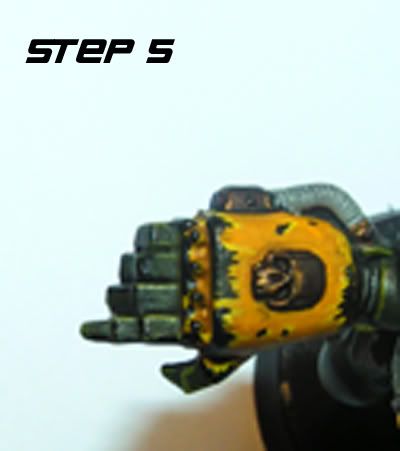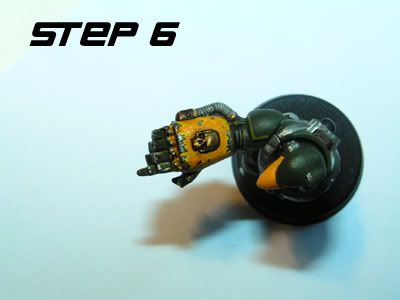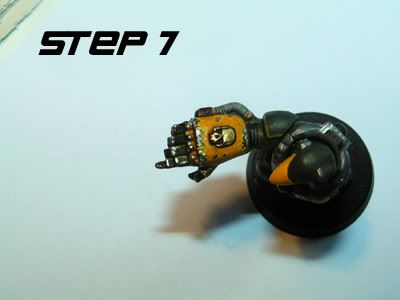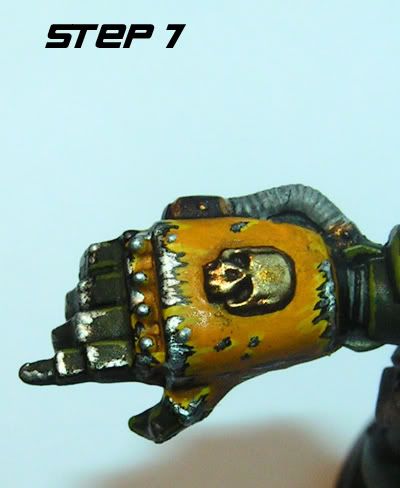 |
| Click to enlarge |
The way I do it you get a light colored skin tone but it isn't bright. The key to this is GW's foundation paint "gretchin Green" and normal plain water. I can't say it enough that you need to water down your paints to get the best result. undiluted paints tend to look "thick"and messy and most of all they obscure the finest detail of your models specially if you use multiple layers.
So here's my step by step recipe:
-First basecoat all the Ork's skin with watered down Gretchin Green. I use 60%GG & 40% water, because it's a foundation paint it has loads of pigment and diluting it will not make it transparent but will make it flow easily and will give you a thin layer.
-Then I wash all of the skin with Devlan Mud wash. I also dilute this to 50/50. You don't have to dilute it but I prefer it so it doesn't look too thick.
-Next I paint all the raised areas like muscles with the same paint I used in the first step.Make sure the wash is completely dry or it will become messy. just leave the deepest areas as they are. this will create the first bit of definition.
-The next step is mixing up Gretchin Green with Bleached Bone and again dilute the mixture it water. I use about 60%Gretchin Green and 40% Bleached bone and water this down again to get a nice flowy paint. I use this mixture to paint the higher areas leaving just a bit of the previous layer visible.
-The 5th step is highlighting the most raised areas and edges. For this I use a mixture of 30%Gretchin Green and 70% Bleached Bone but I water it down quite a bit so it becomes a bit transparent and blends with the previous layer.
-The last step is to blend it all together a bit and for this I use Thraka Green wash that I water down a lot. 20% Thraka and 80% water. If you leave the Thraka too thick it will puddle in the deepest areas and Thraka Green has the nasty habit of leaving a very light color. If you dilute it like me it will blend all your layers together nicely without any nasty side effects
As an alternative you could experiment with the color of washes. I sometimes wash a model with Greyphone Sepia to finish it up or use a purple wash instead of devlan Mud in the 2nd step.
This is a very simple guide on Ork Skin. Of course you can add extra detail by painting in the veins or tattoos.
Cheers,
Seb


